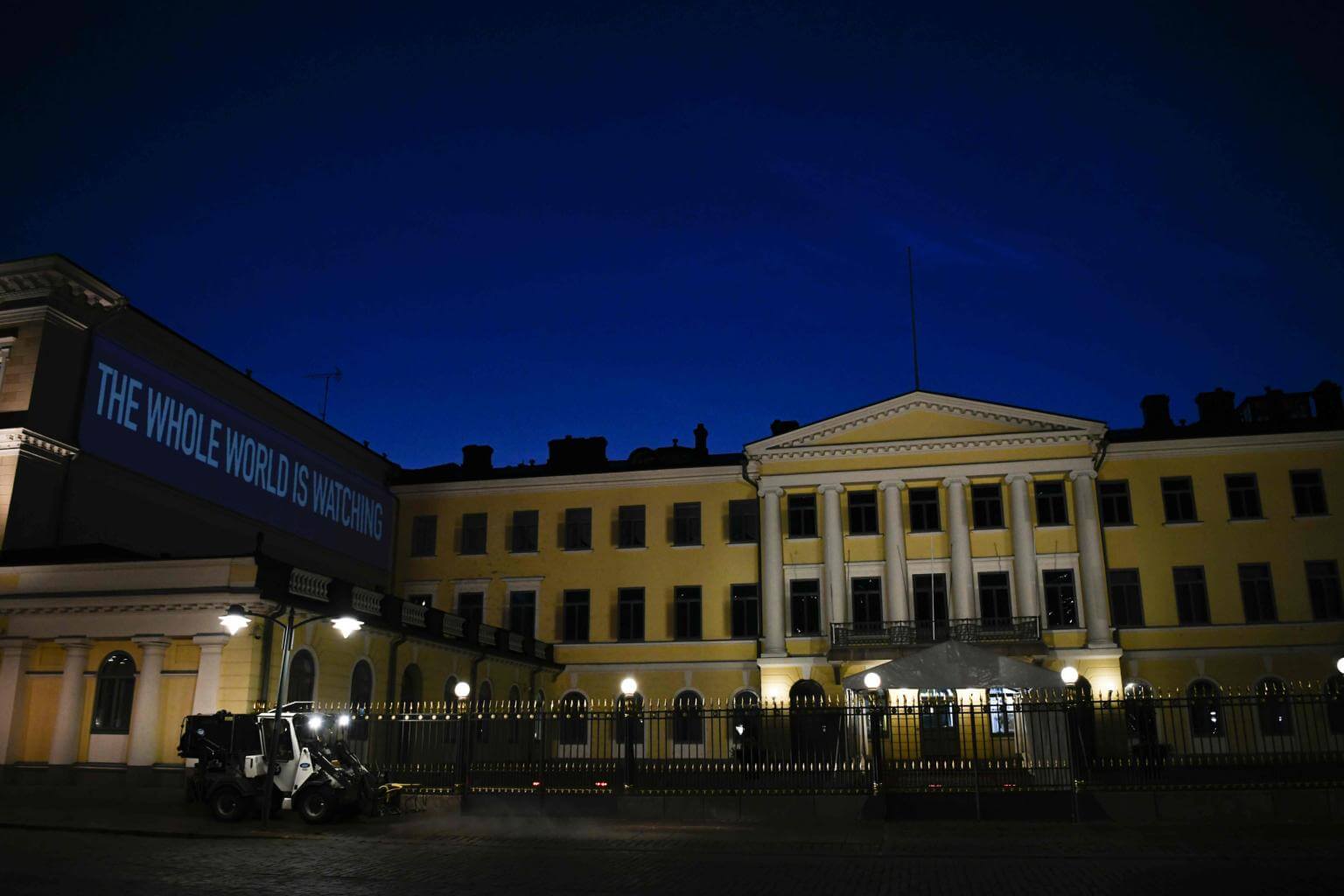Helsinki: Finnish capital seen as neutral ground for Trump-Putin summit
Sign up now: Get ST's newsletters delivered to your inbox

"The whole world is watching" is projected on the presidential palace in Helsinki, Finland, on the eve of the Trump-Putin summit.
PHOTO: AFP
Follow topic:
HELSINKI (AFP) - The choice of Helsinki for Monday's (July 16) first summit between Donald Trump and Vladimir Putin is a reminder of the Finnish capital's Cold War history when it hosted a number of key tete-a-tetes.
Finland shares a 1,340-kilometre border with Russia, and has long chafed at its neighbour's dominance.
A hotbed of spies during the Cold War, Helsinki lies just three hours by train from Saint Petersburg and one hour by plane from three Baltic states that are Nato members.
As a result, it has served as neutral ground for meetings between US and Soviet or Russian leaders.
"Finland was an in-between country in the Cold War era.... It wanted to form this bridge and stressed its neutrality in its relations with the superpowers," Teija Tiilikainen, director of the Finnish Institute of International Affairs, told AFP.
BUILDING BRIDGES
On August 1, 1975 the Helsinki Accords were signed by then US president Gerald Ford and Soviet leader Leonid Brezhnev.
The document stipulated that the two powers would respect the 1945 borders drawn up for Europe by wartime leaders Franklin D. Roosevelt, Joseph Stalin and Winston Churchill in Yalta.
The agreement also raised the issue of human rights, a first at a time when Soviet jails were brimming with dissidents.
In 1990, one year before the fall of the Soviet Union, Finland organised the last USSR-US summit, hosting George Bush and Mikhail Gorbachev.
"Finland has always said that it rejects bloc politics and it played a big role in the de-escalation," a European diplomat told AFP.
The last big meeting between a US and Russian president in Helsinki was in 1997 when Bill Clinton held talks with Boris Yeltsin.
That summit led to progress in arms control and Nato's embrace of former Soviet bloc nations.
NO LONGER AS NEUTRAL
Finland belonged to Sweden for six centuries before becoming a Russian Grand Duchy from 1809 to 1917. It then fended off the Red Army during the Winter War of 1939-1940, and again from June 1941 to September 1944.
During the Cold War, Finland was careful to refrain from any open criticism of Moscow in a practice known as "Finlandisation".
But the collapse of the Soviet Union in 1991 changed everything, with Finland moving quickly to forge closer ties with the West, joining the European Union in 1995.
And while it is not a member of Nato, it enjoys close ties with the Alliance and became a member of its Partnership for Peace programme in 1994.
Last year (2017), Helsinki published a report underlining "the special status" of its bilateral defence ties with Sweden, and referred to the United States as an "important partner" at a time when "military tensions have increased in the Baltic Sea region".
But Russia is Finland's fifth biggest trading partner and the Nordic country treads a careful line with its powerful eastern neighbour.
"Finland has a fairly good relationship with the Russians in the current situation," Juhana Aunesluoma, director of the Centre for European Studies at Helsinki University, told AFP.
CLOSE US TIES
"Finland has also a close relationship with the United States, much closer than it used to have," he said.
Finnish President Sauli Niinisto has played a large role in those ties, being one of the first to congratulate Trump on his 2016 election victory.
He also included Putin in several of Finland's centennial celebrations in 2017.
Finland's role as a facilitator in peace negotiations also follows in the Nordic tradition.
In 2005, the country hosted talks between Indonesia and separatists from the Aceh province that led to a peace treaty.
And in March, it welcomed delegations from North Korea, the US and South Korea to discuss the fraught situation on the Korean peninsula.

